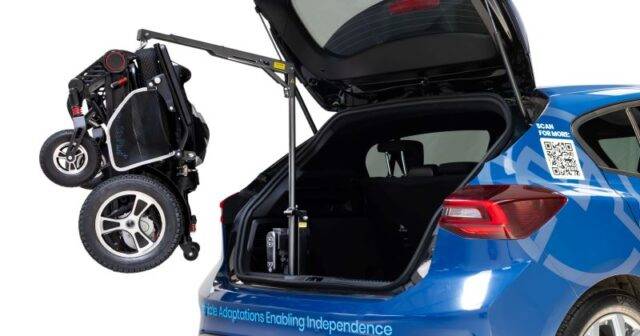Driving as an Amputee
Life after amputation can come with numerous challenges, and one aspect that often concerns people is how it might affect their ability to drive. However, driving as an amputee is not just a possibility, but something that many people do successfully and safely every day.
Understanding the impact of amputation on driving
The implications of amputation on an individual’s driving ability can vary greatly, depending on the type and level of amputation.
Upper limb amputations can influence the ability to steer and control the vehicle, while lower limb amputations can affect how an individual operates the pedals. Yet, with the right adaptations and approach, amputee driving is entirely feasible and allows individuals to regain their driving independence.
Legal considerations
The DVLA (or the DVA in Northern Ireland) in the UK stipulates that drivers must inform them of any health condition or physical change, such as an amputation, which might impact their driving abilities.
Following this notification, the DVLA may perform an assessment or request medical reports to determine if any restrictions should be imposed on the driver’s licence.
The primary aim here is to balance individual independence with the safety of all road users. It’s vital to note that failing to disclose an amputation to the DVLA can lead to fines and the potential invalidation of insurance.
Driving aids and car adaptations for amputees
Advancements in technology have resulted in a broad range of driving aids and car adaptations for amputees, designed to improve the driving experience and maintain independence. Let’s look at some options.
Hand controls
For individuals with lower limb amputations, hand controls can be a game-changer. These adaptations allow drivers to operate the brake and accelerator using their hands, enabling them to maintain control over the vehicle’s speed and stopping power, without the need for foot movement.
Steering aids
Steering aids enable the one-handed operation of a vehicle’s steering wheel; these simple adaptations are often used in conjunction with hand controls.
Left foot accelerator
In the case of a right leg amputation, a left foot accelerator can be installed. This adaptation allows the left foot to control the car’s acceleration.
The road ahead
Adapting to driving after amputation can seem daunting at first, but with proper planning, the right adjustments, and continuous support, you can successfully take back control of your driving independence. Regular health checks and a proactive approach to driving assessments will ensure you’re safe and confident on the road.
Remember, every person’s journey with amputation is unique. Therefore, the process of adapting to driving as an amputee will vary from person to person. Driving aids and adaptations can be tailored to fit your specific needs, ensuring that you retain as much driving independence as possible. It’s essential to explore the options available to you and find the combination of adaptations that best suits your situation.
Facing the prospect of driving as an amputee can feel challenging. However, it’s crucial to remember that you’re not alone on this journey. There’s ample support available, and the continual advancements in technology are making the experience of amputee driving ever more manageable.
More like this

Accessible travel
The Future Of Accessible Motoring: Wheelchair Accessible Vehicle (WAV) Innovations
Hi everyone, it’s Emma from MotaClarity again on the Mobility in Motion platform – thanks for having us. Today, we’re exploring the exciting future of accessible…

News
Aspire Celebrate 100th English Channel Swim Sponsored By Mobility in Motion
Aspire charity who support people with a Spinal Cord Injury, is celebrating its 100th relay swim across the Channel in August. The milestone swim will highlight…

News
Introducing Enhanced Boot Hoist Through Innovative Collaboration
Leading brands Brig-Ayd and Autochair join forces for the first time to deliver a significantly enhanced Brig-Ayd 40kg Mk2 Boot Hoist.